#Lilian Jones
Photo

Jennifer Jones Lilian Gish
30 notes
·
View notes
Text



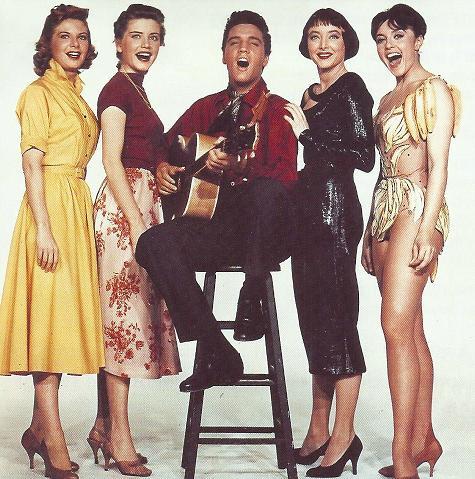


King Creole, 1958
23 notes
·
View notes
Text
L'Héritage Goldman et Michael Jones en tournée 2024 et le 05/03/2024 au Dôme de Paris

L'Héritage Goldman, emmené par Michael Jones, arrive sur les routes de France pour jouer les plus grands airs de Jean-Jacques Goldman avec une date parisienne le 05 mars 2024 au Dôme de Paris - Palais des Sports. Un succès amplement mérité vu la qualité du show.

Sur scène, Michael Jones, et les plus belles voix de la nouvelle scène française (Lilian Renaud, Céphaz, Cyprien Zeni, Mary Cooper, Tomislav Matosin, Jessy Elsa Palma, Anne-Sophie Seba...) interprètent les grands tubes inoubliables de Jean-Jacques Goldman, entourés des musiciens et de l’équipe artistique originelle de Goldman.
Il suffira d'un signe, Encore un matin, Né en 17 à Leidenstadt, Envole-moi, Je te donne, A nos actes manqués, et bien d'autres tubes intemporels de Jean-Jacques Goldman transportent le public et le replongent dans ses souvenirs. Un rendez-vous à ne pas manquer à Paris le 05 mars 2024 et en tournée dans toute la France.
Regardez la bande-annonce de la tournée :
youtube
Tournée 2024
02/03/2024 à Porcieu - Salle des Marinières
03/03/2024 à Lyon - Halle Tony Garnier
05/03/2024 à Paris - Dôme de Paris
06/03/2024 à Aurillac - Le Prisme
07/03/2024 à Aix en Provence - Arena
08/03/2024 à Toulon -Zénith
09/03/2024 à Nice - Palais Nikaia
10/03/2024 à Grenoble - Summum
13/03/2024 à Lille - Zénith
14/03/2024 à Strasbourg - Zénith
15/03/2024 à Besançon - Micropolis
16/03/2024 à Nancy - Zénith
17/03/2024 à Dijon - Zénith
18/03/204 à Nantes - Zénith
20/03/2024 à Amiens - Zénith
21/03/2024 au Mans - Antares
22/03/2024 à Châteauroux - Mach 36
23/03/2024 à Bourg en Bresse - Ekinox
24/03/2024 à Luxembourg - Esch sur Alzette
26/03/2024 à Rouen au Zénith
27/03/2024 à Poitiers - Arena Futuroscope
28/03/2024 à Laval - Espace Mayenne
29/03/2024 à Troyes - Le Cube
30/03/2024 à Clermont-Ferrand - Zénith
...
Infos Toutes les dates de la Tournée 2024

#l'héritage goldman#musique#tournée#concert#spectacle#goldman#michael jones#erick benzi#live#dome de paris#mary cooper#tomislav matosin#cephaz#lilian renaud#Youtube
0 notes
Text
Finding the British Home Children– Joseph Jones UPDATE Part 2
Last week I documented the story below of a request I received about Joseph Jones and the location of the Bain family farm outside of Perth from Cheryl Jones. With information from her we have pieced togethersome of his life.
Update to:
Finding the British Home Children– Joseph Jones and Gertrude Stoner – Bain Family —Jennifer Ferris
Posted on August 28, 2023 by lindaseccaspina
Hi…
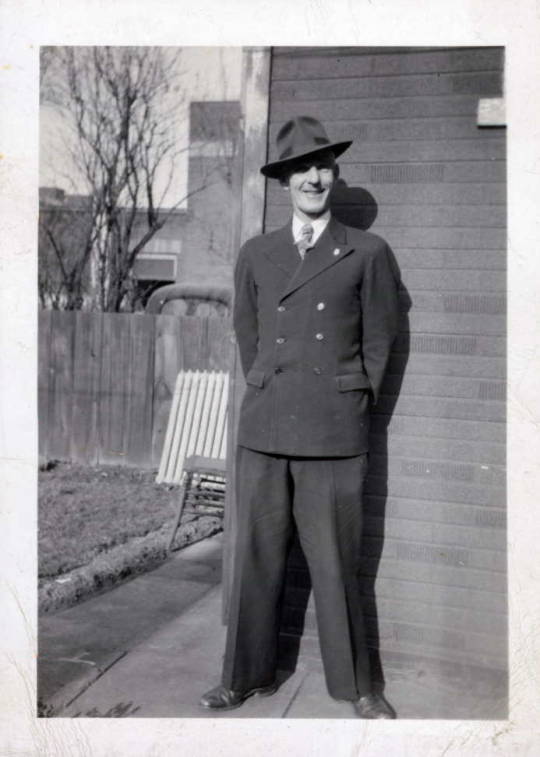
View On WordPress
#Bain#barnardo#british home children#Corsican#Flora Nolan#History#Jones#Joseph Jones#Lanark-County#Lilian Eliza Jones#ontario#part 2#tay valley#update
0 notes
Photo

Duel in the Sun a.k.a. Lust in the Dust (wie dieses dänische Plakat schön andeutet, für das ich wahrscheinlich gleich einen Ersatz suchen sollte), wird auf den Listen mit den großartigsten Western gerne mal übergangen (dabei ist er so groß, daß er ein Vorspiel und eine Ouvertüre hat). Weil er sich halt doch ein kleines bisschen anders benimmt.
#Duel in the Sun#Jennifer Jones#Gregory Peck#Joseph Cotten#Lionel Barrymore#Lilian Gish#Herbert Marshall#Walter Huston#Tilly Losch#Film gesehen#King Vidor#David O. Selznick
1 note
·
View note
Text
"King Creole" (1958)
WATCH IT ONLINE HERE [DAILYMOTION.COM]
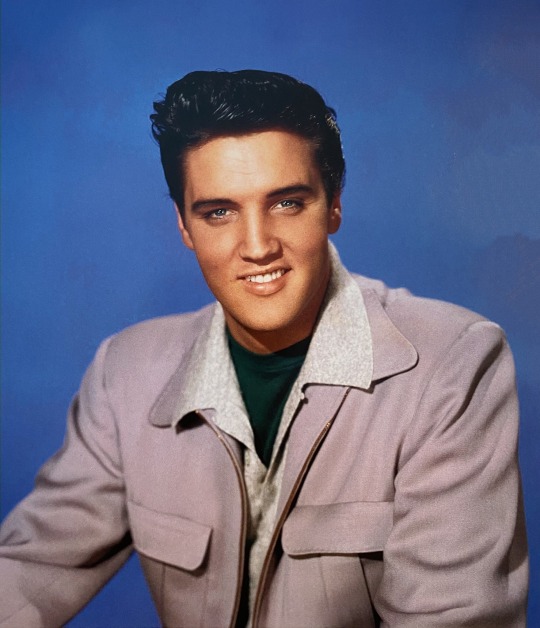
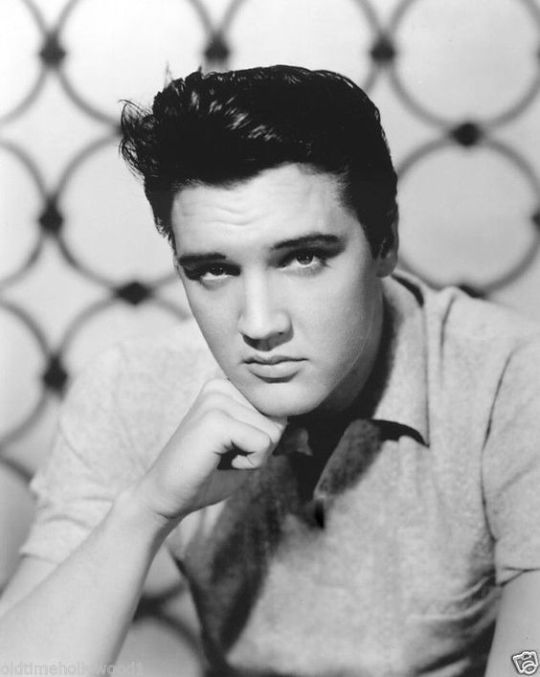





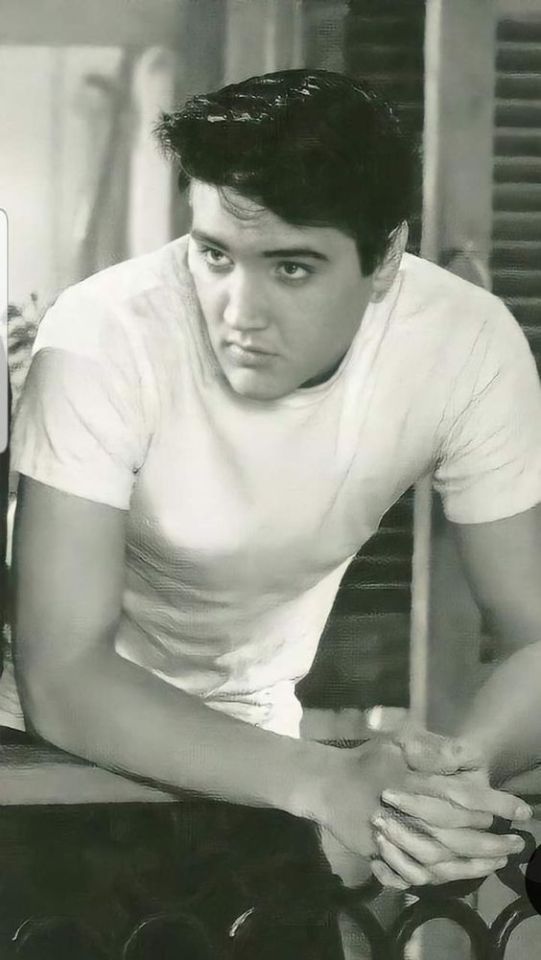



Wardrobe tests, on set and publicity photo shoot.
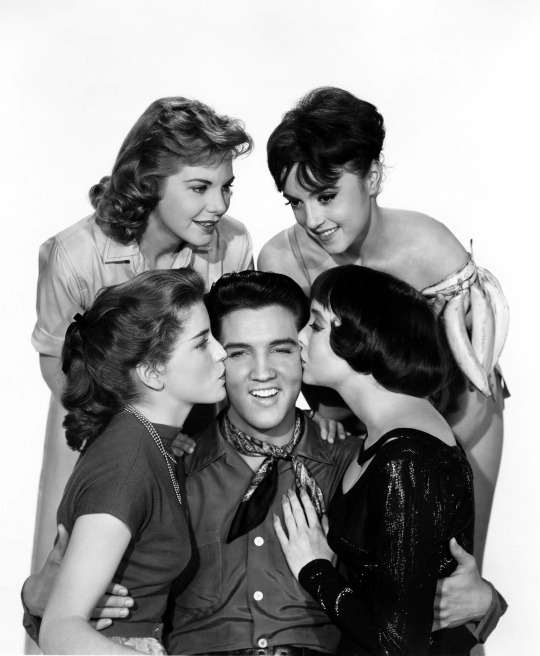
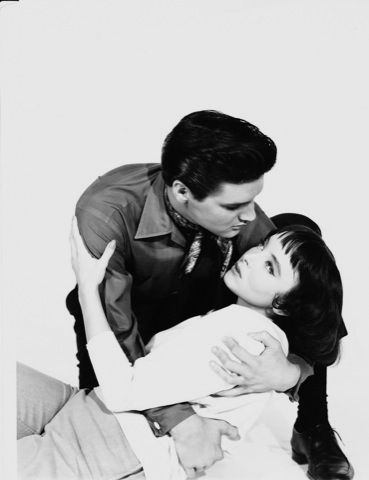

Elvis Presley as Danny Fisher; Carolyn Jones as Ronnie, Maxie's mistress; Dolores Hart as Nellie, a five-and-dime employee who falls for Danny; Liliane Montevecchi as Forty Nina, a stripper at the King Creole nightclub; Jan Shepard as Mimi Fisher, Danny's sister.
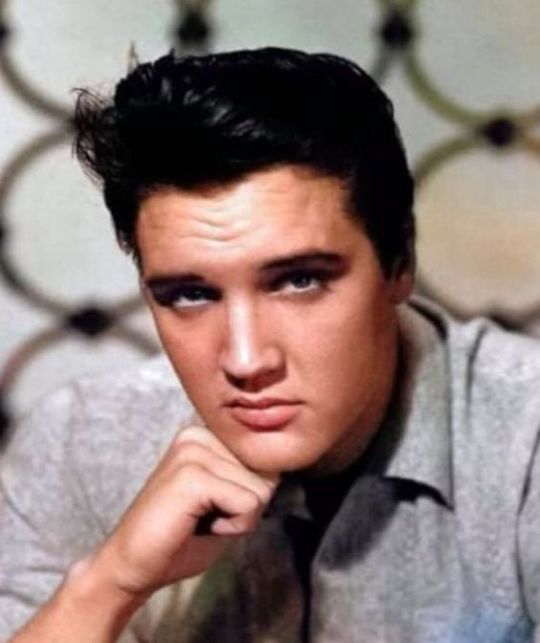
Elvis as Danny Fisher for King Creole (1958)
#elvis presley#elvis#elvis the king#elvis fans#elvis fandom#elvis history#50s elvis#1958#king creole#danny fisher
36 notes
·
View notes
Text
LISTA DE COLEGAS DE QUARTO.
Aproveitem e usem esse post para comentar "sou fulano" ou "procuro fulano" para ajudar na hora de acharem os blogs uns dos outros. Qualquer problema, me contatem!
001: Cassandra Santiago e Sasha Vaughan
002: Pollyana Laurent e Baptista de la Rue
003: Maria Luiza Cheng e Lee Taeoh
004: Bruno de Carvalho e Dove Jiyeon Song
005: Avalon Briarwood e Renee Murray
006: Julieta Chesapeake e Valentina Santiago
007: Helena Williams e Robert Jones
008: Asli Aksoy e Mary Anne Evans
009: Song Hana e Jeremiah Dawson
010: Seray Demirci e Caitlyn Parker
011: Reyna de Angelis e Pinky Yontararak
012: Roderick Winslow e Madison Chamberlain
013: Hayden Scott e Chloe Waldron
014: Elyna Guerrero e Antalya Ersoy
015: Ewan Bach e Lilian Vassilieva
016: Jordan Roderick e Solange de Marches
017: Xiong Mei e James Darling
018: Heathcliff Thatcher e Szymon Anker
019: Camden Doyle e Leyla Sarikaya
020: Kim Seoyeon e Mifune Ahma
021: Park Baelfire e Héléne Salazar
022: Mai Seo e Diana Peterson
023: Loren Hawkins e Verona Hermann
024: Kim Hongkyu e Oliver Lovell
025: Elsie Bonavich e Coralie Wong
026: Madeline Bailey e Brianna Bourque
027: Killian Pierce e Bridget Odessa
19 notes
·
View notes
Text


Robyn and Lilian Moon for @cottageivy
"i'd like to request 2 sims, a teen and a child, as sisters, and i'd like them both to be werewolves! For the older sister her style is kind of like Karen from Daisy Jones and the Six, and for the younger sister i want her to be bubbly takes ballet classes, is very excited to be there but is a little bit oblivious and maybe a little odd".
i'm honestly super happy with how they turned out and i hope you are too!! i had a lot of fun with this prompt, especially as i usually make young adult sims so it was fun to switch it up a bit (and i think werewolf sims are so fun!)
Private download
#also you know i had to use the animal bag for lilian#ts4#ts4 cas#ts4 screenshots#ts4 screenies#ts4 sim request#the sims 4#sims 4#sim requests#my sims#the sims community#simblr
30 notes
·
View notes
Text
SOMETHING BEAUTIFUL
Chapter 00 / Broadway Baby

Love Astor was born in 1951 and raised in New York, New York. The daughter of Robert 'Robbie' Astor, the business mogul, and June Koch, the film star. As a child, Love made a name for herself on Broadway, but as a teenager, she delved into the world of rock 'n' roll.
LILIAN WILLIAMS (former acting coach, the Williams School of Musical Theatre): Oh, yeah, I remember Love Astor.
We met for the first time in ‘55, probably. ‘56 at the latest. Into the school came her mother, June (Koch), dressed to the nines. Think Jackie Kennedy. There’s no way that woman wasn’t going for the First Lady look. Honestly, you might have mistaken her for a politician’s wife rather than an actress. At her side was this beautiful little girl. “This is my daughter, Love,” June said, nodding to her look alike. Love, like her mother, had this long, thick black hair that fell all the way down her back. Her eyes were this stunning sea green color. To this day, they still remind me of the beach. And her cheekbones were sharp, so sharp the rich pay to have theirs come even remotely close.
“What can I do for you, June?” I asked, expecting her to request more lessons for herself, but no. Imagine my surprise when she said, “Love here has the potential to be a great singer, but she needs to be trained. You could help refine her voice, could help turn her potential into skill.”
It came as a surprise, because Love was so young at that point, no older than four. Most children start theatre training between six and eight, but June wanted her children to be like her and Robbie: extraordinary. Usually, I’d refuse to train a child that young, but then June had Love sing one of Judy Garland’s songs. “Over the Rainbow,” if memory serves, and her delivery was smooth, polished. I thought, This kid is going to be somebody when she’s older, and I . . . I want to play a part in making her somebody.
So we started training, and by the mid ‘60s, she was getting casted on Broadway. Playing a part in Camelot, Fiddler on the Roof, Dames at Sea, and Cabaret. A few of the parts were written for older women, but the ‘60s were a different time. No one batted an eye at a teenage girl being cast as a woman. And Love, she put everything she had into each and every part, earning her the love and attention of many. Hell, not even critics had anything bad to say about her . . . until her brother died.
─── ✧・゚: *✧・゚:* ───
On December 1, 1969, the U.S. Selective Service System conducted a lottery to determine the draft order for 1970. Stephen Astro, born March 14, 1949, was assigned lottery number 12.
LOVE ASTOR (singer, Daisy Jones & The Six): For the first eighteen years of my life, I lived at the whims of my mother. “Sing, Love. Eat better. Try harder at school,” she commanded, and I would without hesitation or reserve, because I had been made into a sponge, made to take in whatever orders she wanted. Then, my brother, my dearest friend in the whole world, got drafted, and it changed things. Stephen promised that he would return from Vietnam, that he’d be back before we even realized he was gone, but that was a lie. For eight months, there was radio silence, then word came that he died in Laos.
There was no body, so we buried an empty casket. And that . . . that broke me. I couldn’t bear the thought of him forever being lost, so I looked for something to quiet my mind, to numb the pain. That led me not only to the rock scene but to everything that came with it — drugs, alcohol, sex, and everything in between.
DALE WRIGHT (former bouncer, The Blue Room): I worked at The Blue Room from 1969 to 1974. It was a real sketchy club, bringing in folks from the seediest pockets of the boroughs, but goddamn was there good music. It (the music) drew in tons of better-off folks whose names I don’t remember, but I remember Love Astor. The first time I saw her, I was kicking out a junkie and in walks this bright-eyed, super skinny girl. She had the longest hair I’ve ever seen, and it was tied into some odd braid about her head. Her smile too . . . her smile was something else. It made you feel like you were the only person in the world. She was with some guy who was probably three times her age. He looked at her like she’d hung the moon, but she shed him by the end of the night and left on the arm of a roadie.
After that first time, she started coming in more and more. Four or five times a week, and each time, she’s make it a habit to talk to me and the rest of the club staff, to get to know us. Love was a real people person, you see. She was always happy, and wanted those around her to be happy, too. There was an innocence to her, a naïveté, which was why I made sure to keep an eye out for her. God knows no one else there was.
─── ✧・゚: *✧・゚:* ───
Word Count: 893 words
© Meropegaaunt 2023
#daisy jones and the six#daisy jones headers#billy dunne#camila dunne#graham dunne#karen sirko#sam claflin#blanca soler#simone jackson#suki waterhouse#warren rhodes#eddie roundtree#fanfic#fanfiction#writing#meropegaaunt: something beautiful
41 notes
·
View notes
Text
LÉGENDES DU JAZZ
FATE MARABLE, PIONNIER DU JAZZ SUR LE MISSISSIPPI
"There was a saying in New Orleans. When some musician would get a job on the riverboats with Fate Marable, they'd say, 'Well, you're going to the conservatory.'"
- Zutty Singleton
Né le 2 décembre 1890 à Paducah, au Kentucky, Fate Marable était le fils de James Marable et d’Elizabeth Lilian Wharton. Marable avait deux frères, Harold et James, et trois soeurs, Mabel, Juanita et Neona. La mère de Marable, qui était professeur de piano, avait appris à son fils à lire la musique et à jouer du piano. Au début, la mère de Marable lui avait interdit de toucher à son piano, mais en son absence, il en avait profité pour expérimenter. De guerre lasse, sa mère avait finalement accepté de lui apprendre à jouer.
Enfant-prodige, Marable était si talentueux qu’il aurait commencé à se produire professionnellement à partir de l’âge de neuf ans.
DÉBUTS DE CARRIÈRE
À l’âge de dix-sept ans, en 1907, Marable avait commencé à jouer sur les navires d’excursion qui naviguaient le Mississippi. À l’époque, Marable avait été recruté par John et Joseph Streckfus pour remplacer le pianiste Charles Mills, qui avait été engagé pour jouer à New York. Très consciencieux, Joseph Streckfus avait à coeur le succès de ses vapeurs, qu’il considérait comme une sorte de salles de danse flottantes. Streckfus assistait à toutes les répétitions et critiquait même les performances de ses musiciens.
Engagé comme pianiste de ragtime, Marable se produisait sur le J.S. No. 1, qui était basé à Rock Island, en Illinois. Le navire, qui faisait la navette entre La Nouvelle-Orléans, la Louisiane et la ville de St. Paul, au Minnesota, était la propriété de l’Acme Packet Company. Même si le premier engagement de Marable lui avait permis de jouer en duo avec le violoniste blanc Emil Flindt, ses talents de compositeur et de dépisteur de talents étaient rapidement devenus évidents. Le revenu d’appoint fourni par le travail sur les vapeurs était très apprécié des musiciens de La Nouvelle-Orléans, particulièrement après la fermeture de Storyville (comme on désignait alors le quartier des prostituées ou ‘’Red Light’’) en 1917. En effet, le travail sur les vapeurs procurait un salaire régulier (35$ par semaine avec le gîte et la nourriture, et 45$ sans).
Parmi les responsabilités de Marable sur le vapeur ‘’J.S.’’, on remarquait le maniement d’un calliope à vapeur, une sorte d’orgue format géant doté d’énormes tuyaux qui possédait une pression de quatre-vingt livres et qui servait à annoncer l’arrivée du navire aux riverains. Conçue pour être clairement entendue à partir du rivage, la machine était difficile à manier et exigeait l’utilisation de gants pour manipuler les clés qui étaient souvent très chaudes. Marable devait aussi bourrer ses oreilles de coton afin d’éviter de devenir sourd.
Décrivant les activités de son groupe, Marable avait expliqué: “It sailed to New Orleans that year with me at the piano, and a white fellow playing the violin. That’s all we had. Each year, we added one more piece until we had what we thought was a great big band. Four pieces — piano, violin, trumpet and drums. All of them were white boys but me, and playing strictly ragtime.” Le groupe de quatre musiciens de Marable s’était produit sur le ‘’J.S.’’ jusqu’en 1910, alors que le navire avait été la proie des flammes. Après avoir acheté la Diamond Jo Packet Company, le capitaine John Streckfus avait lancé une nouvelle ligne comprenant des navires comme le St. Paul, le Quincy (qui était devenu plus tard le second ‘’J.S.’’), le Dubuque et le Sidney. C’est sur le Sidney que Marable avait poursuivi ses activités. Il précisait: “We were going in and out of New Orleans all the time, and I began to notice the type of music they were playing there. It just got under my skin.’’
Parmi les membres du groupe de Marable, on remarquait Johnny St. Cyr au banjo, “Baby” Ridgeley au trombone, Davey Jones au melophone, Paul Dominguez au violon, Sam Dutrey à la clarinette, Norman Mason à la trompette, George “Pops” Foster à la contrebasse et Warren “Baby” Dodds à la batterie. C’est aussi en se produisant sur les navires à vapeur que Marable avait découvert Louis Armstrong, qu’il avait engagé par la suite pour jouer sur les navires d’excursion qui se rendaient à la Nouvelle-Orléans.
À l’époque, Armstrong, qui était alors âgé de dix-huit ans, venait tout juste d’apprendre à lire la musique avec Davey Jones. Ce dernier avait déclaré à Armstrong: “Louis, you can blow and you can swing because it’s natural to you. But you’ll never be able to swing any better than you already know how until you learn to read. Then you can swing in ways you never thought of before!” Au début, les spectateurs avaient été peu réceptifs, mais Marable avait rapidement effectué les ajustements nécessaires. Marable expliquait: “Finally, after the intermission, We got a little spasmodic applause, but the people were completely amazed at our type of music. You could tell, though, that they were beginning to like it.”
Comme chef d’orchestre, Marable n’avait pas tardé à partager les leçons de sa mère avec ses musiciens. La plupart des musiciens de Marable jouant par oreille, il avait développé leurs aptitudes en leur apprenant à lire la musique. Comme l’avait expliqué un des batteurs de Marable, le légendaire Zutty Singleton: "There was a saying in New Orleans. When some musician would get a job on the riverboats with Fate Marable, they'd say, 'Well, you're going to the conservatory.'" En montrant aux musiciens à mieux exécuter les arrangements de danse pour les passagers des vapeurs, Marable a également conribué à lancer la carrière de plusieurs futurs grands noms du jazz comme Cab Calloway, Count Basie, King Oliver, Johnny St. Cyr, les frères Johnny et ‘’Baby’’ Dodds, Tommy Ladnier, ‘’Pops’’ Foster, Duke Ellington, Jimmie Lunceford, Fats Waller et Chick Webb.
Avec Armstrong, Marable avait remporté un grand succès avec la pièce ‘’St. Louis Blues’’, une composition de W. C. Handy qui avait permis à l’orchestre de devenir un des meilleurs groupes de danse aux États-Unis. Indirectement, Marable avait même participé à l’invention du scat. Marable adorait raconter une anecdote au sujet de l’enregistrement de la pièce “Heebie-Jeebies.” Ce jour-là, Armstrong avait complètement oublié les paroles et s’était mis à enchaîner les onomatopées. L’innovation avait été reprise par la suite par de nombreux chanteurs et chanteuses comme Cab Calloway, Fats Waller et Ella Fizgerald.
À l’époque, le ragtime était à son apogée. Marable précisait: “It was an entirely different kind music, than the ragtime which preceded it or the swing which followed. While ragtime, like jazz, was born and bred in New Orleans, St. Louis accepted it and some of the finest ‘rags’ ever written were written here.”
Le premier ragtime majeur de l’histoire avait été publié en 1895 sous le titre de “Harlem Rag’’ par Tom Turpin, qui était également l’auteur de “St. Louis Rag” et de “Bowery Buck.” Quatre ans plus tard, Scott Joplin avait publié son célèbre “Maple Leaf Rag”. D’autres pianistes et compositeurs de St- Louis avaient suivi l’exemple de Joplin, dont Sammy Paterson (Patterson), Louis Chauvin, Charlie Thompson, Robert Hampton, Walter Farrington et Johnny Arnold.
Marable étant très exigeant, les membres de son groupe devaient être capables de jouer plusieurs styles de musique, allant des grands succès de l’heure aux classiques du jazz. Même si Marable demandait à ses musiciens de rendre le public heureux et d’être disciplinés, il leur avait aussi permis de développer leur potentiel. C’est dans cette perspective que Marable avait encouragé le talent d’improvisateur de Louis Armstrong et qu’il lui avait laissé toute latitude pour se lancer dans de grandes envolées même s’il s’écartait parfois de la partition. Le groupe de Marable avait aussi servi d’école à plusieurs futurs grands noms du jazz dont Red Allen, Baby Dodds, Johnny Dodds, King Oliver, Pops Foster, Erroll Garner, Narvin Kimball, Al Morgan, Jimmy Blanton, Tommy Ladnier, Johnny St. Cyr, Red Allen, Elbert Pee Wee Claybrook, Earl Bostic, Al Morgan, Narvin Kimball, Gene Sedric, Joe Poston et Zutty Singleton.
Décrivant sa passion pour le jazz, Marable avait commenté:
“Jazz was the outgrowth of Negro life in New Orleans. It developed from the chants of roustabouts loading cotton boats, singing with perfect rhythm as they lifted the bales. It grew out of the music played by bands[,] which accompanied funeral processions. On the way to a burial the music was solemn, with a sound marching tempo. But on the way back from the burial the musicians pepped up the marches to cheer the mourners. No matter how they deviated from the melody in improvisation, though, they still had the basic foundation of timing, and they never missed a beat. They took marches like ‘My Maryland,’ ‘High Society,’ ‘Panama,’ and ‘That’s a Plenty’ — playing them first just like a brass band marching down the street, every beat and every instrument clear. Then when they started improvising, the foundation was still there.”
C’est la transition du ragtime vers le jazz qui avait convaincu Marable de transformer son orchestre presque entièrement composé de musiciens blancs en groupe exclusivement de couleur en 1917. Appelé le Kentucky Jazz Band, le groupe était surtout formé de musiciens originaires de Paducah, même si du propre aveu de Marable, il était loin d’arriver à la cheville des musiciens de La Nouvelle-Orléans.
Après avoir engagé un nouveau pianiste, le Kentucky Jazz Band s’était rendu dans le nord en 1918. Marable était demeuré à St. Louis pour faire la publicité du vapeur St. Paul. Pendant que Rodemich et ses joueurs de ragtime faisaient danser les spectateurs, Marable se produisait seul au piano au second étage de la cafétéria. L’année suivante, le groupe de couleur de Marable avait pris la place de Rodemich.
Même s’il était un excellent chef d’orchestre, Marable n’avait rien d’un compositeur. En 1916, Marable avait d’ailleurs publié la seule composition originale de sa carrière. Intitulée ‘’Barrell House Rag’’, la pièce avait été co-écrite avec Clarence Williams.
Mais la célébrité est souvent ingrate. À la suite du déclin du Dixieland et de l’avènement du jazz symphonique de chefs d’orchestre comme Paul Whiteman, plusieurs des musiciens de Marable avaient commencé à le quitter. Le premier à quitter le groupe avait été Louis Armstrong, qui avait signé un contrat avec le cabaret de Tom Anderson à La Nouvelle-Orléans en 1921 avant de se joindre à l’orchestre de King Oliver à Chicago l’année suivante. En 1928, lorsque le jazz à Chicago était entré dans une période de déclin, Marable avait tenté de ramener Armstrong dans le giron de l’orchestre en lui offrant un salaire variant de 75$ à 125$ par semaine, mais ce dernier avait décliné la proposition.
Le batteur ‘’Baby’’ Dodds avaient quitté le groupe la même année qu’Armstrong pour se joindre à l’orchestre d’Oliver. Au début des années 1920, le batteur “Zutty” Singleton avait lui aussi quité le ‘’navire’’ pour se joindre au Pee Wee Russell Trio, aux Rhythmakers puis aux groupes de Louis Armstrong.
Boyd Atkins, le violoniste qui avait écrit le célèbre “Heebie-Jeebies’’ popularisé par Louis Armstrong, avait quitté en 1923 pour lancer son propre groupe à Chicago. Pour sa part, le trompettiste Sidney Desvigne avait tiré sa révérence en 1926. Quant au trompettiste Irving Randolph, il avait poursuivi sa carrière avec l’orchestre de Cab Calloway. À la même époque, le saxophoniste Earl Carruthers s’était joint au groupe de Jimmie Lunceford. Quant au trompettiste Henry “Red” Allen, Jr., il avait quitté le groupe en 1929 pour devenir membre du Mills Blue Rhythm Band.
Loin de s’arrêter là, les départs s’étaient poursuivis en 1935 avec l’engagement du saxophoniste Tab Smith avec l’orchestre de Count Basie. Pour sa part, le joueur de trombone Nathaniel Storey s’était joint à l’orchestre de Chick Webb, avant d’aller jouer avec le groupe Jeter Pillar au Club Plantation de St. Louis.
Le contrebassiste Jimmy Blanton avait quitté le groupe en 1939 pour se joindre à l’orchestre de Duke Ellington, dont il avait fait partie jusqu’à sa mort en 1942. Marable avait pariculièremen regretté le départ de Blanton au sujet duquel il avait déclaré: “The year before Jimmy died, a music critic asked me whom I considered the greatest instrumentalists in the country at the time. My answer was: ‘Give me Benny Goodman, Louis Armstrong, Jimmy Blanton and let the rest of the world go by.’ If Jimmy had lived, I know he would now be regarded as the greatest bass player.”
Pendant que le batteur Floyd Campbell avait formé son propre groupe à Chicago, le saxophoniste Eugene Sedric s’était joint au groupe de Fats Waller. Pour sa part, le contrebassiste Al Morgan avait poursuivi sa carrière avec l’orchestre de Cab Calloway avant de devenir membre du groupe du chanteur Louis Jordan. Les trompettistes Charlie Creath et Dewey Jackson avaient dirigé leurs propres groupes à St. Louis.
Résumant cette période de sa vie, Marable avait commenté: “When Paul Whiteman arrived on the scene with his symphonic ideas, arrangements and what not, the Dixieland style of jazz began to peter out gradually, although with his entrance about 1921, my band was right on top of the list.’’ Très fier d’avoir contribué au développement de si grands musiciens, Marable avait ajouté:
‘’I have played ragtime, jazz-time and swing and I believe that the Dixieland style of jazz gives a man the best chance to play what’s in him. A real jazz musician doesn’t require the other man’s thought through arrangements. He plays as a solid musician of his own making. Furthermore, I can tell a New Orleans band from a Chicago type or a St. Louis type anytime. New York, of course, doesn’t have any particular type or style — it’s everybody’s style.
Lots of those jazz musicians couldn’t read music — never mind an arrangement. I could read myself because my mother was a piano teacher and I studied at Straight University in New Orleans, but, sometimes, there was only one man in a jazz band who could read. I firmly believe that New Orleans and Louis Armstrong have done more for the present dance band than any other factors, for the simple reason that Louis is New Orleans style personified, and he is copied by instrumentalists and singers alike.”
DERNIÈRES ANNÉES
Marable avait quitté l’orchestre en 1940 pour se consacrer à sa carrière de pianiste. À la fin de sa vie, Marable avait travaillé comme dépisteur de talents dans les clubs de La Nouvelle-Orléans. Il se produisait aussi dans les jam sessions.
Fate Marable est mort de pneumonie à St. Louis, au Missouri, le 16 janvier 1947. Il était âgé de cinquante-six ans. Marable a été inhumé au Oak Grove Cemetery de Paducah, au Kentucky.
Comme plusieurs musiciens de La Nouvelle-Orléans, Marable n’avait jamais tellement apprécié le nouveau style de jazz, qu’il trouvait souvent dépourvu d’émotion. Marable expliquait:
“The music of today seems to lack the fire that it had in the old jazz days, and some of the present bands are using arrangements copied from things we did in New Orleans in 1912. My favorites in the field today are Benny Goodman — and let me tell you that white people can play the Negro’s jazz, although some people will say no — Louis Armstrong, Count Basie, Woody Herman, the King Cole Trio and ‘Red’ Allen.”
Marable a eu un fils, Fate Marable Jr. Celui-ci, qui serait toujours vivant, habiterait à Pittsburgh et serait aujourd’hui âgé de plus de quatre-vingt-sept ans. Marable, qui avait suivi les traces de son père, avait dirigé un groupe et joué du piano à Pittsburgh. Marable est aujourd’hui considéré comme le père spirituel de plusieurs pianistes de Pittsburgh comme Mary Lou Williams, Earl "Fatha" Hines, Erroll Garner, Billy Strayhorn, Ahmad Jamal, Horace Parlan, Dodo Marmarosa et Johnny Costa.
©-2024, tous droits réservés, Les Productions de l’Imaginaire historique
2 notes
·
View notes
Text

I drew it as a special 👏. Jones and Lilian, they'll be husband and wife for a while until the story will progress further
#art#artwork#drawing#flipaclip#flipaclip art#oc#oc art#oc artwork#oc artist#furry oc#furry artist#illustration#ibispaint art#ibispaintdrawing#made in ibis paint#made by me#furry art#furry artwork#furry character#furry cat#valentines day#valentines special#happy valentine's day#happy valentines#cat oc#cat oc art#cat ocs
2 notes
·
View notes
Text
bonus muses.
GWYNETH BERDARA.
a court of thrones and roses. eleanor tomlinson. she / her, 28+, demisexual / demiromantic. fairly canon complaint as far as her valkyrie storyline.
EMERIE.
a court of thrones and roses. naomi scott. she / her, 28+, demisexual / homoromantic. fairly canon complaint as far as her valkyrie storyline.
LIDIA CERVOS.
crescent city. ester exposito. she / her, 25+, bisexual / biromantic. headcanon based with a fair amount of canon compliance.
ALINA STARKOV.
grishaverse. jessie mei li. she / they, 21+, bisexual / biromantic. headcanon based.
JOHANNA MASON.
the hunger games. elizabeth gillies. she / her, 20+, bisexual / biromantic. headcanon based.
AELIN GALATHYNIUS.
throne of glass. tiera skovbye + freya allan. she / her, 20+, bisexual / biromantic. currently have not read kingdom of ash.
NEHEMIA YTGER.
throne of glass. ella balinska. she / her, 19+, bisexual / biromantic. currently have not read kingdom of ash.
EMILY PRENTISS.
criminal minds. paget brewster. she / her, 45+, bisexual / biromantic. have not watched s16+.
QUINN FABRAY.
crossover based. dianna agron. she / her, 25+, bisexual / demiromantic. backstory depends on canon inserted into.
SERENA VAN DER WOODSEN.
gossip girl. blake lively. she / her, 21+, bisexual / biromantic. honestly just vibes, completely ignoring canon storylines.
REGINA MILLS.
once upon a time. lana parrilla. she / her, 30+, bisexual / demiromantic. headcanon based, very canon critical.
QUINN JAMES.
one tree hill. shantel vansanten. she / her, 35+, bisexual / biromantic. headcanon based.
TESSA GRAY.
shadowhunters. lily collins + daisy edgar jones. she / her, 100+, bisexual / biromantic / polyamorous. mostly adapted to the show, very little focus on the books timeline except if it has to to with tid.
JACE HERONDALE.
shadowhunters + crossover based. dominic sherwood. he / him, 25+, bisexual / demiromantic. headcanon based.
MARYSE LIGHTWOOD.
shadowhunters. marisol nichols. she / her, 50+, bisexual / biromantic. fairly canon complaint.
ALLISON ARGENT.
teen wolf. crystal reed. she / her, 30+, bisexual / biromantic. post series based with no ties to the movie.
SCOTT MCCALL.
teen wolf. tyler posey. he / they, 30+, bisexual / demiromantic. post series based with no ties to the movie.
LEXI BRANSON.
various vampire lore + unaffiliated with canon. arielle kebbel + emily van camp. she / her, 500+, bisexual / biromantic. headcanon based.
ELENA GILBERT.
various vampire lore + unaffiliated with canon. hande erçel. she / her, 21+, bisexual / biromantic. headcanon based.
JOHANNA WILLIAMS - LABONAIR.
tvdu + original lore. dakota johnson. she / her, 25+, bisexual / biromantic. original character.
LILIAN LABONAIR.
tvdu + original lore. poppy drayton. she / her, 18+, bisexual / biromantic. original character.
1 note
·
View note
Text

(I will post more fan Abomination content, but for now - check out what a family tree I made just a few seconds ago!)
(topics of death will be down there, they follow all my stories👌)
These are my OCs, all of them are. The main ones are the bottom 3. Jones is my big favourite, and his son Chase. And Lilian is interesting, and didn't have a name for a whole year if not more.
Jones is a warrior of justice, but at the end gets too carried away and creates an apocalypse instead of something that fixes justice issue in his world. _ He was alive, then did a big oopsie and was k*lled for it. Then he came back (William, it's you?) but couldn't interact with the world, so he was communicating with his son since he was the only person who could see him. Fortunately, his son shared his mentality. Or he was brainwashed, 50/50.
Chase. Son of Jones, for the most part was supposed to be the main character until I created an AU where Jones was it, and it was more interesting to me bc Jones is more fun. So he was a proxy villain, and in the end realised he was fooled and changed sides. His fight, like his father's, had cost him his life. And a body bc his father possesed it to come back the second time and prove that their little win did nothing. And I have no canon ending for this AU, all of them are random interpretations depending on my mood. In other words - you can choose whether he'd win or not. Chase remains as a ghost around his mother after that. And when he was alive he was a cult leader, fulfilling Jones' policy. A prophet I think. Also they were a cult of .. well .. they ate some meat, but guess where they got it. Btw I now have a good explanation for that. As I figured out a year later - their town had almost or no forest area, which means that they got all food from trading. And what trading do you except when the country is in war? Btw it my stories each town is it's own country bc it's easier to imagine. So yeah, probably hunger made them do that. But then Idk about the rest of their population that wasn't the cult. Mortality was high, but not for all of them. ... Guess they got some little creatures or whatever in this small area. Btw they are omnivorous, they can eat both fruits and meat, but prefer meat bc cats by nature.
Oof, Idk if I can fit info about Lilian in here, but I hope so. When everything was yet usual she was on a stroll and saw one of the soldiers that regularly patrolled the town. (And this was the only one who actually cared for his duties) And she got a crush on him, so started communicating with him. He never had any communication that was friendly, so he agreed. They were meeting for a while and then decided to become a family. Idk how any documentation works there, perhaps through the plot hole. But they became a family and Lilian gave birth to his son. When he came home she asked how to name him and Jones said "Chase. So he would chase the great goals" ("like I do") but he didn't say the thing in braces. And son was named Chase. _ Then one day Jones came back to suddenly reveal that he's leaving his family and perhaps will never come back like ever. They had a fight about that bc Lilian was not only sad that Jones' leaving, but also concerned for his life. He probably was saying he's going to die. (Btw he left them only so they won't be executed if he fails. He loved them still.) Then the next morning people were gathered on "the main street"(?) and someone was publicly executed. Guess who — Jones. It broke poor Lilian and she ran home to cry, didn't even lock the door behind herself. And her son didn't understand why she's so sad. Then he looks back and sees a ghost who was hopeless in trying to comfort his family while being intangible. ... Many years later Chase is showing pretty much the same abnormal behaviour that caused Jones' execution, so his mom does her best to try to quiet him about that and make people to not take his behaviour that seriously. Bc she didn't want him to meet the same fate. Meanwhile Chase took it as his mom being too much of a coward to help him fight for the good. And their relationship wasn't good bc of that. She even went so far that tried to get Chase a prescription of some pills that would keep him calm to not act out. Chase found out and hated it. And never trusted his mother again. ... Later in life he became a doctor, I forgot why. Whenever he came home he didn't talk to his mother much despite her trying to ask him how he's been. She wasn't stupid and understood why he behaved this way, but couldn't tell him the truth who his father was bc it would be dangerous. Either he would say about that out loud to others or he would be even bolder in his abnormal behaviour. Oof. _ Then happens the main lore and she realises all her efforts were in vain. And despite how she feared for her own life she wasn't hurt during the so called "sorting" (basically an act of g*n*cide). And even more time later she found out her dead husband was behind all the world falling apart and was livid, and dedicated the second part of her life to fighting him off. (He was hurt by that and whined to anyone who would listen. After his death he changed in character a bit btw. Probable reason - no physical body to control emotions. He was more dramatic and more, super even, impulsive. Especially in anger). Jones was fought off by his wife once, and it had cost their son's life. Yet again Lilian was devastated. (Poor Lilian)
Yes I want to write a book some day 👍. And this story is called "cult of the white star". The first canon story has an explanation why the start is involved. The second one has it too, but this star is physical. Also probably serves as Jones' surname, I'm unsure 👀
#digital art#digital arwork#my art#my artwork#artwork#art#cat oc#oc artist#oc story#long text#furry cat#furry character#furry oc#Jones can't balance between family and some high goal Idk how to name. Also for some reason he always seemed similar to Ashfur tho he isn't#a lovesick maniac. At least it's not his motivation for evil in the first place. Also he now reminds me of William bc of the first sentence#In similarity I mean that whenever I see Ashfur videos I get inspired for Jones#lol it was 4 am so there's so many typos (neighbours' fault I was there at 4 am)
4 notes
·
View notes
Text
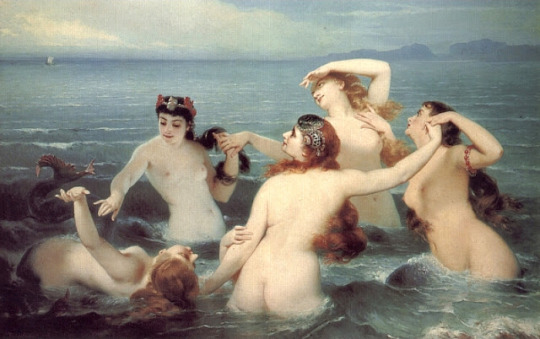
Artists: Charles Edouard Boutibonne, Edward Okun, Laura JamesDoris Prouty, Harald Oskar Sohlberg, Ralph Cahoon, Elisabeth Jerichau-Baumann, Arthur Wardle, Giovanni Segantini, Isobel Lilian Gloag, Edward Poynter, Edward Matthew Hale, Edvard Munch, Akseli Gallen-Kallela, Aino, Akseli Gallen-Kallela, Anton Teofil Kwiatkowski, Carl Bertling , Robert Anning Bell, William Arthur Breakspeare, Gerard de Lairesse, Howard Pyle, Julyan Davis, Albert Hanson, Victor Mottez, Victor-Louis Mottez, Victor-Louis Mottez, Léon Auguste Adolphe Belly, Christine Wyatt, Maurice William Greiffenhagen, Lord Frederic Leighton, Frederick Appleyard, Edward Burne-Jones, Herb Ritts, Francesca Stern Woodman, David Drebin,
Please follow link for full post
Ilya Repin,Julius Hübner,Alexandra V.Bach,Knut Ekvall,Gustave Wertheimer,Konstantin Yegorovich Makovsky,H.J. Ford,Elihu Vedder,John William Whiteley,Troy Howell,Koloman Moser,Norman Prescott Davies,
68 Works and tales of Mermaids in Europe, Asia and Africa, with Footnotes #6
#Mermaids#Hellenic#Zaidan#Mythology#Religion#biography#Paintings#Art#History#footnotes#FANTASY#Marine#fineart#sailing
6 notes
·
View notes
Text
All My Eurovision Winners

Here I will register my winners of all the years of Eurovision. This list will always be subject to change.
1956 — 🇳🇱 De vogels van Holland [Jetty Paerl]
1957 — 🇦🇹 Wohin, kleines Pony? [Bob Martin]
1958 — 🇨🇭 Giorgio [Lys Assia]
1959 — 🇸🇪 Augustin [Brita Borg]
1960 — 🇫🇷 Tom Pillibi [Jacqueline Boyer]
1961 — 🇮🇹 Al Di Là [Betty Curtis]
1962 — 🇫🇮 Tipi-tii [Marion Rung]
1963 — 🇩🇰 Dansevise [Grethe & Jørgen Ingmann]
1964 — 🇩🇪 Man gewöhnt sich so schnell an das Schöne [Nora Nova]
1965 — 🇮🇪 Walking the Streets in the Rain [Butch Moore]
1966 — 🇵🇹 Ele e Ela [Madalena Iglésias]
1967 — 🇪🇸 Hablemos del amor [Raphael]
1968 — 🇲🇨 À chacun sa chanson [Line & Willy]
1969 — 🇳🇱 De Troubadour [Lenny Kuhr]
1970 — 🇬🇧 Knock, Knock Who's There? [Mary Hopkin]
1971 — 🇲🇨 Un banc, un arbre, une rue [Séverine]
1972 — 🇮🇪 Ceol an Ghrá [Sandie Jones]
1973 — 🇪🇸 Eres Tú [Mocedades]
1974 — 🇸🇪 Waterloo [ABBA]
1975 — 🇹🇷 Seninle Bir Dakika [Semiha Yankı]
1976 — 🇬🇷 Panagia mou, Panagia mou [Mariza Koch]
1977 — 🇱🇺 Frère Jacques [Anne-Marie B.]
1978 — 🇲🇨 Les jardins de Monaco [Caline & Olivier Toussaint]
1979 — 🇵🇹 Sobe, sobe, balão sobe [Manuela Bravo]
1980 — 🇲🇦 Bitaqat hub [Samira Bensaïd]
1981 — 🇩🇪 Johnny Blue [Lena Valaitis]
1982 — 🇨🇾 Mono i agapi [Anna Vissi]
1983 — 🇮🇱 Chai! [Ofra Haza]
1984 — 🇮🇪 Terminal 3 [Linda Martin]
1985 — 🇳🇴 La det swinge [Bobbysocks!]
1986 — ⭐️ Željo moja [Doris Dragović]
1987 — 🇧🇪 Soldiers of Love [Liliane Saint-Pierre]
1988 — 🇱🇺 Croire [Lara Fabian]
1989 — 🇹🇷 Bana Bana [Grup Pan]
1990 — 🇪🇸 Bandido [Azúcar Moreno]
1991 — 🇫🇷 C'est le dernier qui a parlé qui a raison [Amina]
1992 — ⭐ Ljubim te pesmama [Extra Nena]
1993 — 🇧🇦 Sva bol svijeta [Fazla]
1994 — 🇬🇧 We Will Be Free (Lonely Symphony) [Frances Ruffelle]
1995 — 🇳🇴 Nocturne [Secret Garden]
1996 — 🇵🇹 O Meu Coração Não Tem Cor [Lúcia Moniz]
1997 — 🇮🇹 Fiumi di parole [Jalisse]
1998 — 🇫🇮 Aava [Edea]
1999 — 🇱🇹 Strazdas [Aistė Smilgevičiūtė]
2000 — 🇫🇮 A Little Bit [Nina Åström]
2001 — 🇩🇪 Wer Liebe lebt [Michelle]
2002 — 🇮🇱 Light a Candle [Sarit Hadad]
2003 — 🇧🇪 Sanomi [Urban Trad]
2004 — 🇪🇪 Tii [Neiokõsõ]
2005 — 🇨🇭 Cool Vibes [Vanilla Ninja]
2006 — 🇧🇦 Lejla [Hari Mata Hari]
2007 — 🇬🇪 Visionary Dream [Sopho Khalvashi]
2008 — 🇷🇸 Oro [Jelena Tomašević feat. Bora Dugic]
2009 — 🇦🇲 Jan Jan [Inga and Anush Arshakyan]
2010 — 🇸🇰 Horehronie [Kristína Peláková]
2011 — 🇧🇬 Na Inat [Poli Genova]
2012 — 🇸🇪 Euphoria [Loreen]
2013 — 🇳🇴 I Feed You My Love [Margaret Berger]
2014 — 🇳🇱 Calm After The Storm [The Common Linnets]
2015 — 🇲🇪 Adio [Knez]
2016 — 🇺🇦 1944 [Jamala]
2017 — 🇵🇹 Amar Pelos Dois [Salvador Sobral]
2018 — 🇪🇪 La Forza [Elina Nechayeva]
2019 — 🇦🇱 Ktheju Tokës [Jonida Maliqi]
2020 — 🇺🇦 Solovey [Go_A]
2021 — 🇫🇷 Voilà [Barbara Pravi]
2022 — 🇺🇦 Stefania [Kalush Orchestra]
2023 — 🇪🇸 Eaea [Blanca Paloma]
7 notes
·
View notes
Text

El Día Mundial del Circo se celebra el tercer sábado del mes de abril y este año 2023 tendrá lugar el día 15 de abril en todo el mundo. Es una efeméride promovida por la Federation Mondiale du Cirque, que busca reconocer, preservar y promover el valor del circo y su aportación cultural.
¿Cómo se originó el circo?
El circo es una tradición muy antigua que, de acuerdo a los estudiosos de la materia, se remonta hace muchos siglos atrás en Mesopotamia. En este lugar se han encontrado algunas pinturas que datan del año 2.040 a.C donde se pueden ver figuras de acróbatas.
En china y la India también se han encontrado vestigios de esta práctica que se calcula que pueden ser del año 3.000 a.C. En estos tiempos ya existían personas que eran contorsionistas, acróbatas y extraordinarios malabaristas.

Durante la Edad Media el circo adquirió mayor popularidad. La gente podía disfrutar de espectáculos bufonescos, pero esto representaba ciertos riesgos para sus organizadores. Fue durante el Renacimiento que estas compañías pudieron funcionar con mayor seguridad y de manera legal.
A mediados del siglo XVIII tuvo mayor auge y hoy, gracias al inglés Philip Astley podemos disfrutar de un circo moderno, ya que él sentó las bases cuando empezó a mostrar otras representaciones como acrobacias y bailarines y para darle un toque de humor, introdujo la figura del payaso.
A principios del siglo XIX aparecen otras figuras circenses como los llamados "Espectáculos de Fenómenos", donde aparecían personas con algunas deformidades. El personaje más famoso de esa época fue el "hombre elefante", quién ganó fama, al punto que su historia fue contada por la industria del cine.
Personas del circo que hicieron historia
Muchos hombres y mujeres han quedado en la historia por haber tenido un papel notable en el mundo del circo. Aquí te dejamos una lista de los que destacaron por sus destrezas y que dejaron una huella imborrable en quienes tuvieron el honor de presenciar cada uno de sus actos.
El payaso Dan Rice: Poseedor de un gran ingenio, donde presentaba humor y sátira política, que supo ganar el respeto y admiración de hombres importantes de la época como Mark Twain y el presidente Zachary Taylor.
El acróbata Jules Leotard: Fue el primer hombre en montar el trapecio volador.
La gimnasta Lilian Leitzel: Poseedora de una gran belleza, supo cautivar al público con sus acrobacias colgada en unos anillos romanos, sin embargo, perdió la vida muy joven cuando cayó al suelo mientras realizaba una de sus rutinas.
El escapista Harry Houdini: Considerado el escapista más grande de la historia, siendo la "Metamorfosis" el acto más sorprendente y que era el preferido de los asistentes.
La mujer barbuda Annie Jones: Su principal atributo era una larga barba, que impresionaba cada vez que acudía al circo. Además fue reconocida por tener gran talento para la música.
Los circos más famosos del mundo
El circo ha sido para el hombre, un bálsamo. Un gran espectáculo que ha llenado de felicidad y asombro a muchas generaciones alrededor del mundo. Aquí te dejamos algunos de los que gozan de mayor popularidad:

Cirque du Soleil: Es el circo canadiense más famoso del mundo. Con un espectáculo impresionante que deja al espectador sin palabras por su magia, color y alucinante puesta en escena.
Circo de Chengdu: Es uno de los mejores circos del continente asiático. Sus presentaciones contaban con grandes gimnastas, acróbatas y malabaristas.
Big Apple Circus: Ha gozado de gran prestigio a nivel internacional por tener excelentes magos, bailarines, payasos. Considerado la mejor escuela de clowns.
Circo Raluy Legacy: Este circo español es el de los más vistosos por sus majestuosas decoraciones, cuenta con grandes acróbatas, que con sus piruetas y malabares maravillan a la audiencia.
Antiguo Circo de Moscú: A pesar de sus cambios, sigue teniendo vigencia y cautiva el interés del público.
Películas y documentales sobre el mundo del circo
"El Gran Carnaval" (EEUU, 1951. Director: Billy Wilder): un periodista investiga el mundo del circo y descubre que la vida detrás de escena es más emocionante que el espectáculo en sí.
"Los siete locos" (Argentina, 1973. Director: Leopoldo Torre Nilsson): basada en la novela de Roberto Arlt, esta película cuenta la historia de Remo Erdosain, quien se une a un circo en busca de un nuevo comienzo.
"Circo" (EEUU, 2010. Director: Aaron Schock): documental que cuenta la historia de una familia de artistas circenses mexicanos mientras recorren los Estados Unidos.
"Saltimbanco" (Francia, 1992. Director: Jean-Pierre Jeunet): esta película cuenta la historia de un joven que abandona su vida aburrida para unirse a un circo ambulante.
"El circo" (EEUU, 1928. Director: Charlie Chaplin): Chaplin interpreta a un vagabundo que se une a un circo como limpiador, pero termina convirtiéndose en el payaso principal.
"El Circo de los Extraños" (EEUU, 2009. Director: Paul Weitz): en esta película de fantasía, un joven se une a un circo misterioso con artistas con habilidades sobrenaturales.
"El Circo del Sol: mundos lejanos" (Canadá, 1999. Director: Keith Melton): este documental sigue al famoso Cirque du Soleil mientras recorre el mundo con sus espectáculos.
La prohibición de los animales en los circos
En los últimos años, ha habido un creciente movimiento en todo el mundo para prohibir el uso de animales en los circos. Muchos países han promulgado leyes que prohíben o restringen el uso de animales en los espectáculos circenses debido a preocupaciones sobre el bienestar animal y los riesgos de seguridad para los humanos.

En algunos países, como Bolivia, Grecia, Israel, México, Perú, Paraguay, y algunos estados de Estados Unidos, se ha prohibido completamente el uso de animales en los circos.
En otros países, como Alemania, Bélgica, Austria, Colombia, Costa Rica, Reino Unido, y algunos estados de Australia, se han implementado restricciones y regulaciones más estrictas para el uso de animales en los circos, como prohibiciones sobre el uso de animales salvajes y exóticos, y la implementación de inspecciones y monitoreo.
La prohibición de los animales en los circos ha sido respaldada por organizaciones de bienestar animal, grupos de derechos de los animales, y muchos ciudadanos preocupados por el bienestar animal.
Algunas de las preocupaciones comunes incluyen la falta de espacio y ejercicio para los animales en cautiverio, el entrenamiento y manejo cruel de los animales, y los riesgos de seguridad para los humanos que interactúan con animales salvajes.
Si bien aún hay circos que utilizan animales en sus espectáculos, la tendencia global está claramente en contra del uso de animales en el circo y hacia formas más humanas y éticas de entretenimiento circense.
¿Cómo celebrar el Día Mundial del Circo?
La mejor forma de celebrar el Día Mundial del Circo es acudiendo a ver algún espectáculo de circo que tengamos cerca. De esta manera, podemos continuar la tradición apoyando la cultura del circo desde nuestros espacios, compartiendo con nuestras familias y amigos de este maravilloso arte, hablando con los niños sobre este interesante tema y aprendiendo un poco más sobre el fascinante mundo circense.
Si quieres formar parte de esta celebración, entonces te invitamos a que compartas tu opinión, ideas y experiencias sobre este tema a través de las distintas redes sociales con los hashtag #DíaMundialdelCirco #Circoday.
4 notes
·
View notes